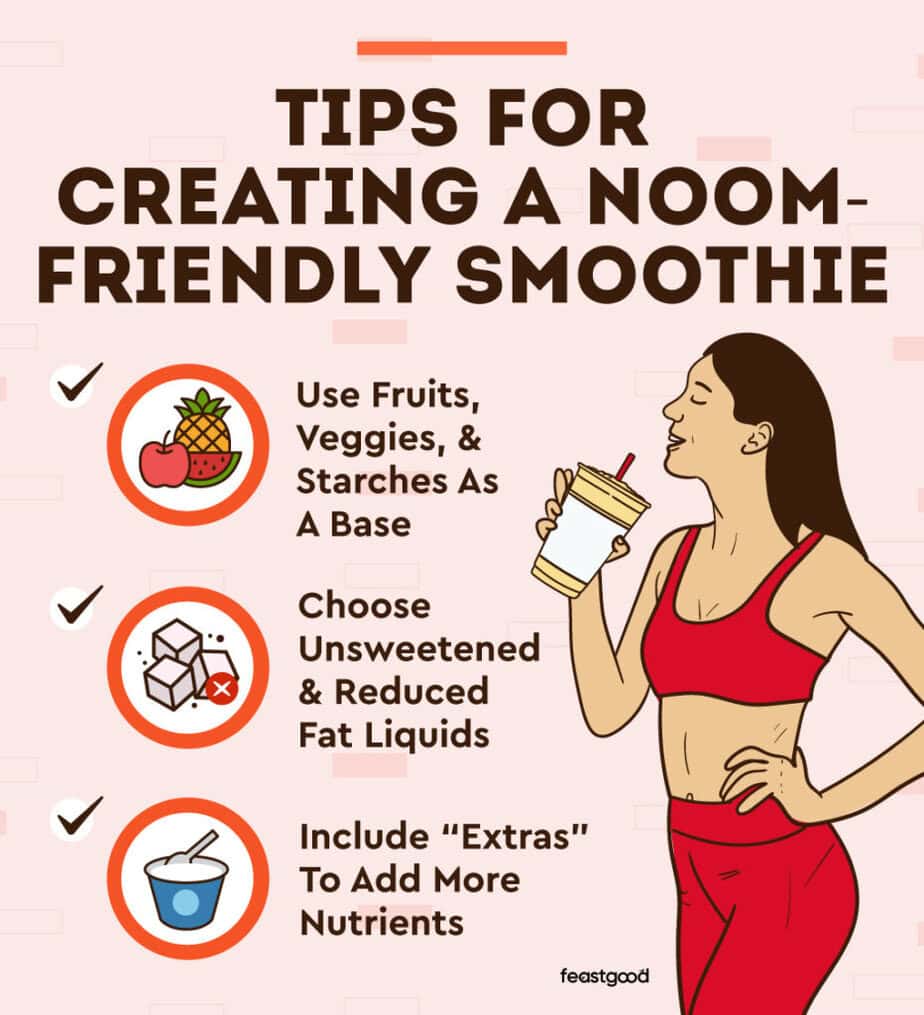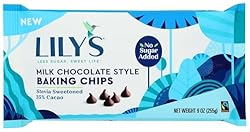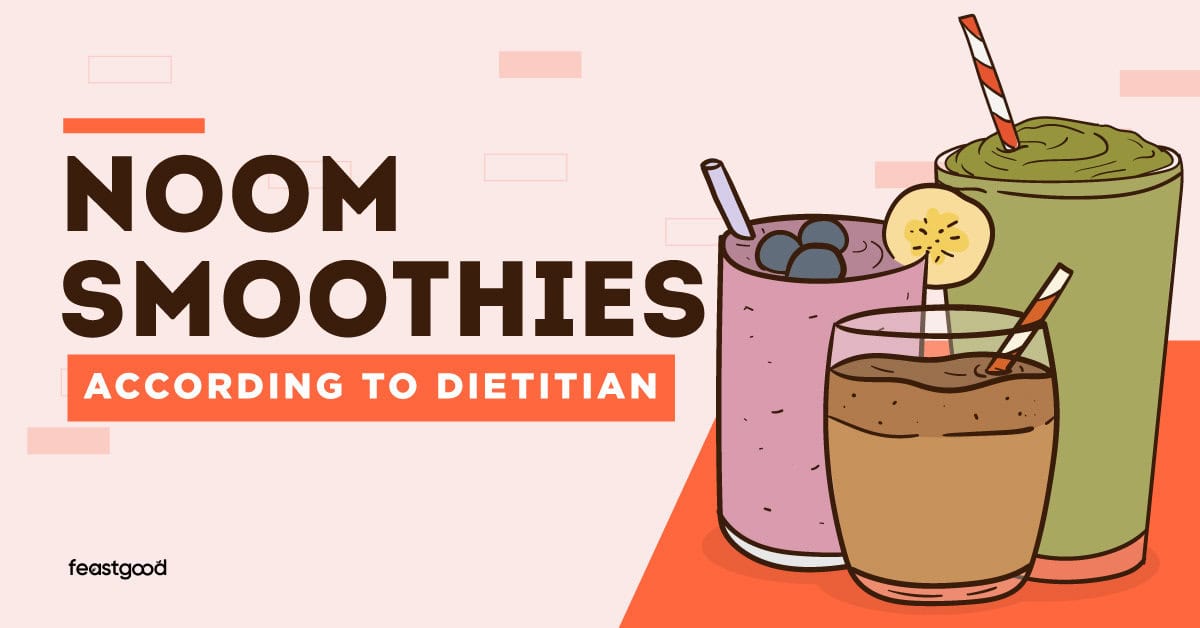Some links in this article are affiliate links, which means we earn from qualifying purchases. Learn more.
If you’re following the Noom diet and need smoothie options to stay within your calorie target, you’ve come to the right place. I’ve compiled 15 Noom-friendly smoothie options packed full of green and yellow foods to stay on track even if you’re on the go.
What Makes A Noom-Friendly Smoothie?
A Noom-friendly smoothie follows the color categorization system of the Noom app, which teaches users the difference between low-calorie vs. high-calorie foods and nutrient-dense vs. nutrient-poor foods.
Noom’s color categorization system aims to:
- Encourage users to eat a more balanced diet and make healthier food choices
- Promote awareness of calorie-dense, less nutritious choices to aid in weight management
Noom’s colors follow a traffic light system of green, yellow, and red, encouraging users to consume green foods in larger quantities more often and red foods in smaller quantities less often.
Green foods: Fruits, vegetables, fat-free dairy, and whole grains that are lower in calories and higher in nutrients.
Yellow foods: Low-fat dairy, legumes, and lean meats that are slightly more calorie-dense and should be eaten in moderate portions.
Red (now orange) foods: Sugary treats and high-calorie items that should be consumed in limited quantities due to their calorie density.
Therefore, a Noom-Friendly Smoothie will have a higher proportion of green foods, a moderate amount of yellow foods, and a limited amount of red foods.
3 Tips For Creating A Noom-Friendly Smoothie

My top tips for creating a noom-friendly smoothie are:
Tip #1: Use Fruits, Veggies, and Starches As A Base
Choosing green foods like fruits, veggies, and starches (i.e., oats) as your base can help you stick to your Noom calorie range more easily because they are lower-calorie foods.
Other benefits of using these foods as a base include:
- Fruits are a natural sweetener, negating the need for added sugars in your smoothie.
- Veggies and starches add fiber to your smoothie, which helps regulate digestion and keeps you full for extended periods.
- These foods are full of micronutrients (vitamins & minerals) to give your body the nutrients it needs to function optimally.
Tip #2: Choose Unsweetened and Reduced Fat Liquids
To make a smoothie, you must include a liquid along with your base.
Liquids can easily add a ton of calories to your smoothie, especially if you’re choosing fruit juice or higher-fat dairy, so choosing a liquid that keeps calories in check is important.
The best liquids to use for your Noom-Friendly smoothie are:
- Water
- Coconut water
- Cold brew coffee
- Reduced-fat cow’s milk
- Unsweetened soy milk
- Unsweetened nut milk (almond, cashew)
Tip #3: Include “Extras” To Add More Nutrients
Adding a few extras to your smoothie will make it more filling and nutritious, even if these extras are yellow and red foods.
The extras will be used in smaller quantities than the base and liquid of your smoothie, so this is the perfect time to add nutritious yellow and red foods that are higher in calories.
Extras I recommend include:
- Protein-rich sources like Greek yogurt keep you full for longer
- Probiotic-rich sources like plain kefir for better gut health and digestion
- Protein powder to encourage muscle retention as you lose weight
- Nuts and seeds for a dose of healthy fat and fiber
15 Noom Smoothie Ideas
1. Coffee, Banana, and Chia
If you’re a coffee lover, this smoothie is for you. It’s made with brewed coffee, a banana, ice, chia seeds, and cocoa powder (optional) for a chocolatey taste. I’m also a big fan of adding protein powder to make it more filling.
The caffeine increases focus and alertness, the banana adds natural sweetness and fiber for digestion, chia seeds provide omega-3 fatty acids for anti-inflammation and some fiber, and the protein powder boosts protein-promoting satiety.
Check out the recipe here.
385 calories per serving
2. Mixed Berry and Date
This smoothie combines a range of berries (strawberries, blueberries, and raspberries), naturally sweet dates, and spinach with almond or cashew milk (unsweetened).
This is a great noom-friendly option as all of these ingredients (except dates) fall into the green food category. These ingredients offer a variety of nutrients, including antioxidants and fiber, without excess sugars or calories.
Optional add-ins are chia seeds, linseeds, protein powder, or Greek yogurt to add more protein, fiber, and omega-3 fatty acids for satiety and anti-inflammation properties.
Find the recipe here.
330 calories per serving (excluding add-ins)
3. Mango, Pineapple, Avocado, Ginger, and Spinach
This nutritious smoothie combines fruits, green veggies, and ginger with an unsweetened or reduced-fat liquid base. I love using coconut water as my base to give this smoothie a tropical twist and a boost of electrolytes for added hydration.
This recipe is high in green and yellow foods and offers various nutrients, including vitamin C, manganese, fiber, iron, and healthy fats, promoting immune support and overall well-being.
Try this recipe here.
311 calories per serving
4. Cocoa and Banana Smoothie Bowl
This smoothie bowl combines banana, unsweetened cocoa powder, coffee, and protein powder with toppings like flaked almonds, chia seeds, sliced strawberries, or berries. This is the smoothie for you if you prefer to eat your smoothie rather than drink it.
It includes nutrients like fiber, antioxidants (from fruits), polyphenols (from cocoa), and omega-3 fatty acids (from nuts/seeds), which all have anti-inflammatory properties.
The base and liquid of this smoothie bowl are packed full of green foods (except for the protein powder).
The toppings are your opportunities to add “extras”, so you can tailor these to your preferences and control the amount of yellow and red foods you want to include.
Try the recipe here
272 calories per serving (excluding toppings)
5. Kiwi, Spinach, and Avocado
This nutritious blend comprises chia seeds, kiwi, mango, spinach, and avocado mixed with plant-based, unsweetened milk.
If you like the creaminess of milk as your liquid, then keep it as is; however, if you want a tropical juice vibe, switch out the milk for coconut water.
Regardless of which liquid you choose, this smoothie is packed full of green foods (kiwi, mango, spinach, and unsweetened plant milk or water) with a moderate amount of yellow food (avocado) and a sprinkle of red food (chia seeds).
Have a read of this recipe.
258 calories per serving
6. Almond Butter, Banana, and Oat
This recipe incorporates almond butter, banana, oats, and unsweetened vanilla almond milk. I personally feel like this combination has a cookie dough vibe to it, so I like to sprinkle in some chocolate chips (I prefer these because they’re sweetened with stevia).

This smoothie helps you meet your green food requirements with oats, bananas, and unsweetened plant-based milk. The almond butter (red food) also provides a dose of healthy fats in an appropriate quantity, aligning with Noom’s recommendations.
This smoothie can help satisfy your sweet tooth and balance your blood sugars, which helps reduce cravings.
Have a go at this recipe.
278 calories per serving
7. Blueberry, Lemon, and Pear
This blueberry and pear smoothie recipe uses these fruits with a zest of lemon and unsweetened nut milk, all green foods.
This smoothie is a great option for a Noom-friendly snack because it’s very low in calories but high in nutrients.
However, if you want this smoothie to serve as a meal, I suggest adding Greek yogurt or protein powder to keep you full for longer.
Here’s the recipe.
203 calories per serving (without added protein)
8. Berry, Banana, Chia, and Oat
This smoothie blends mixed berries (strawberries, blueberries, and raspberries), banana, chia seeds, oats, and a liquid base like unsweetened almond milk mixed with Greek yogurt.
The recipe calls for vanilla Greek yogurt, but I recommend using plain Greek yogurt to reduce the added sugars; the smoothie will already be naturally sweet thanks to the berries and banana so that you won’t notice the difference.
Apart from the chia seeds, the ingredients of this smoothie are all green foods (assuming you’re using fat-free plain Greek yogurt), which makes this smoothie incredibly Noom-friendly.
This smoothie has a lot to offer because berries are packed with vitamins and minerals, chia seeds provide omega-3 fatty acids and fiber, greek yogurt provides protein and probiotics, and oats provide sustained energy and additional fiber.
Have a look at this recipe.
389 calories per serving
9. Vanilla, Cashew, and Date
If you like creamy smoothies, this one is for you. It blends vanilla extract, protein powder, medjool dates, cashew nuts, and unsweetened cashew milk.
This smoothie is Noom-friendly but has more yellow and red foods than many other options in this list. Remember, yellow and red foods aren’t necessarily less nutritious, just higher in calories than green foods.
It incorporates healthy fats and copper (from cashews), is rich in fiber, and is sweetened with dates and protein powder.
This smoothie helps manage cravings and promote satiety, so it’s the perfect meal to reach for when you’re on the go and hunger strikes.
Check out the recipe.
265 calories per serving
10. Strawberry and Banana
This nutritious blend of fresh strawberries, banana, greek yogurt, and low-fat milk is an easy recipe with only 4 ingredients. It aligns with Noom’s principles by combining whole fruits (no added sugars) with low-fat products.
The recipe calls for flavored Greek yogurt, but I recommend sticking to plain Greek yogurt to reduce added sugars and increase your consumption of green foods.
It is also rich in vitamin C (strawberries), potassium (bananas), and fiber, which promote immune health, fluid regulation, and proper digestion.
Try the following recipe.
199 calories per serving
11. Pineapple and Banana
This recipe includes pineapple, frozen banana, greek yogurt, and pineapple juice for a refreshing summer smoothie. It balances micronutrients, including large amounts of vitamin C and manganese (from pineapple), and vitamin B and potassium (from bananas).
These micronutrients are beneficial for the immune system (particularly vitamin c and its antioxidant role), cell metabolism and nutrient absorption, and fluid balance to name a few.
Although you could use the pineapple juice that the recipe calls for, I actually prefer using coconut water instead, which lowers the sugar content and improves hydration.
Have a look at the original recipe here.
266 calories per serving (with fruit juice)
12. Carrot, Pineapple, and Banana
This sweet blend includes a mix of carrots, pineapple, greek yogurt, walnuts, and cashew milk, providing you with many nutrients (vitamins A and C, fiber, protein, omega-3 fatty acids, potassium, and manganese).
Incorporating cinnamon and nutmeg gives the natural carrot cake flavor without adding sugars and food additives. As such, this nutritious recipe can be included in a balanced diet, aiding in weight management.
You can find the recipe here.
343 calories per serving (without toppings)
13. Chocolate, Date, Oat, and Nut Butter
This smoothie is made by blending cocoa powder, dates, rolled oats, milk, and nut butter ( almond or peanut). It’s a wholesome addition to a healthy “noom” diet because it provides fiber, protein, vitamins C and E, iron, and potassium.
This recipe calls for chocolate chips, so you can choose to omit them to reduce the amount of added sugars in this smoothie, or you could buy chocolate chips sweetened with stevia.
Adding rolled oats and nut butter helps prevent a spike in blood sugar by slowing down digestion. Although rolled oats and nut butter increase your consumption of yellow and red foods, it’s well worth it for the stable energy this smoothie provides.
Here’s the recipe.
527 calories per serving (including chocolate chips)
14. Watermelon and Strawberry
This is another refreshing summer smoothie recipe, with only 4 ingredients: watermelon chunks, frozen strawberries, greek yogurt, and milk (or watermelon juice with no added sugars).
Watermelon contains lots of water, is low in calories, and is a perfect hydrating option to add to a smoothie.
This smoothie is the perfect Noom-friendly option when adding green foods to your day because it can be made with entirely green foods (watermelon, strawberries, fat-free Greek yogurt, and unsweetened nut milk).
Check out this recipe.
112 calories per serving
15. Peanut Butter and Banana
With just a few nutrient-rich ingredients, this smoothie is ideal if you are looking for a sweet and nutty treat. You only need bananas, a little bit of peanut butter (natural), milk, greek yogurt, and ice cubes.
This smoothie would qualify as noom-friendly if you use banana, unsweetened plant-based milk, fat-free plain Greek yogurt, natural peanut butter, and skip the honey.
If you use flavored Greek yogurt, higher-fat dairy products, and honey, this smoothie could easily become less noom-friendly, so choosing your ingredients wisely when reading the recipe is important.
Have a go at this recipe.
282 calories per serving
Other Noom Recipes
Check out my other recipe recommendations for Noom:
- Noom Friendly Breakfast Ideas
- Noom Friendly Dessert Ideas
- Noom Friendly Soup Recipes
- Noom Friendly Lunch Ideas
If you have any questions about the recipes in this article, feel free to contact [email protected] and ask for Giulia!
About The Author

Giulia Rossetto is a qualified Dietitian and Nutritionist. She holds a Masters in Human Nutrition (University of Sheffield, UK) and more recently graduated as a Dietitian (University of Malta). Giulia aims to translate evidence-based science to the public through teaching and writing content. She has worked 4+ years in clinical settings and has also published articles in academic journals. She is into running, swimming and weight lifting, and enjoys spending time in the mountains (she has a soft spot for hiking and skiing in the Italian Dolomites).
Why Trust Our Content

On Staff at FeastGood.com, we have Registered Dietitians, coaches with PhDs in Human Nutrition, and internationally ranked athletes who contribute to our editorial process. This includes research, writing, editing, fact-checking, and product testing/reviews. At a bare minimum, all authors must be certified nutrition coaches by either the National Academy of Sports Medicine, International Sport Sciences Association, or Precision Nutrition. Learn more about our team here.
Have a Question?
If you have any questions or feedback about what you’ve read, you can reach out to us at [email protected]. We respond to every email within 1 business day.
